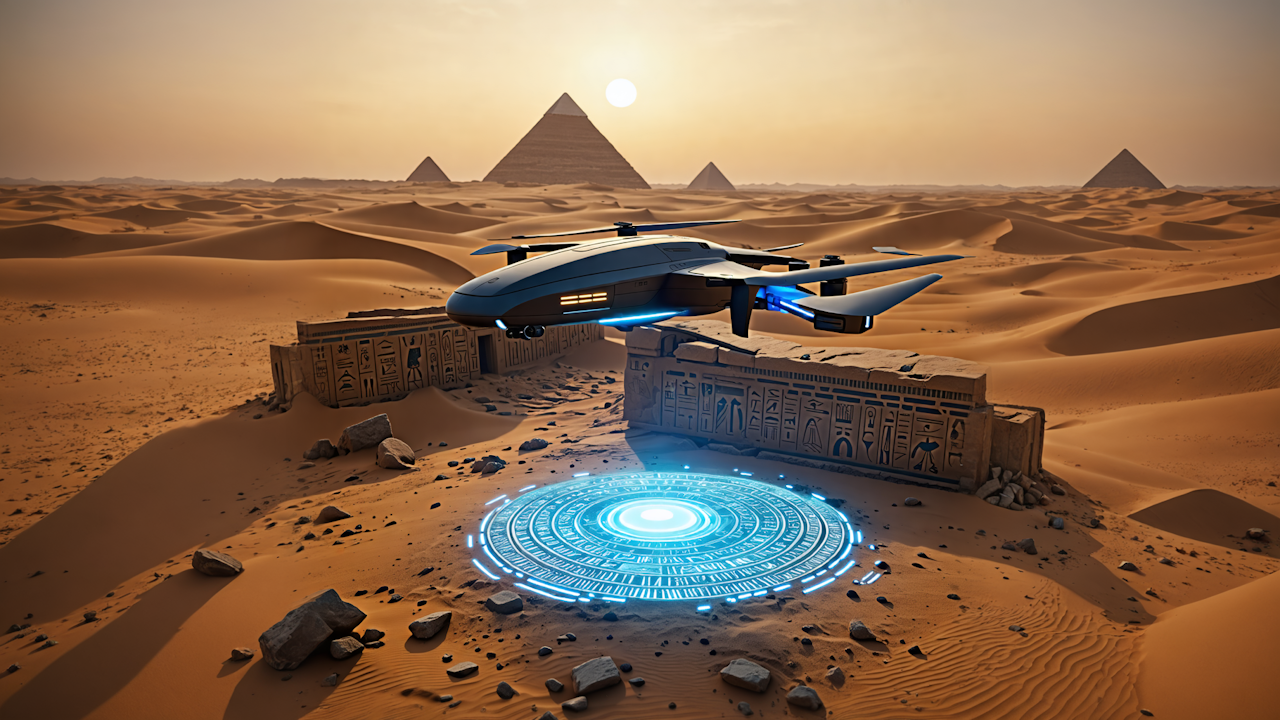In the arid stretches of the world’s deserts, where the relentless sun preserves the secrets of ancient civilisations beneath layers of sand, a new kind of explorer has emerged—a digital archaeologist powered by artificial intelligence (AI). This technology is not only reshaping traditional archaeology but also unveiling hidden archaeological sites with unprecedented precision and speed.
The deserts of Peru have recently yielded an extraordinary find: 303 new geoglyphs in the Nazca desert, discovered with the aid of AI. These etchings, which depict various shapes and figures, are believed to hold clues about the ancient Nazca civilisation. Researchers, utilising AI applications capable of analysing aerial images, have managed to identify these geoglyphs even when they are faintly etched into the desert floor. This technological marvel not only doubles the known number of Nazca lines but also provides fresh insights into their cultural significance.
The Technological Revolution in Archaeology
The integration of AI in archaeology represents a significant leap forward. By harnessing machine learning algorithms, researchers are now able to process vast amounts of satellite and aerial imagery, which helps in detecting subtle changes in the landscape that may indicate human activity. In a fascinating twist, archaeologists have even used AI in conjunction with imagery from Cold War-era spy satellites to locate ancient underground aqueducts. These systems, once vital for sustaining life in arid regions, now tell stories of survival and ingenuity.
Key players in this field, including researchers from Abu Dhabi, have pioneered methods to efficiently search vast desert areas for archaeological sites. By employing AI-driven tools, these researchers have significantly reduced the time and resources traditionally required to uncover historical artefacts buried beneath desert sands. This technological synergy not only enhances the accuracy of discoveries but also opens up new possibilities for preserving and understanding our cultural heritage.
Implications and Future Prospects
The implications of AI-driven archaeology are profound. By transforming how sites are discovered and analysed, AI is providing archaeologists with new tools to delve deeper into the past, offering a more comprehensive understanding of ancient cultures. This transformation is not without its challenges, however. The reliance on technology raises questions about the preservation of traditional archaeological methods and the potential loss of human expertise in the field.
Looking ahead, the future of AI in archaeology appears promising. As AI technology continues to evolve, its applications in archaeology will likely expand, leading to more groundbreaking discoveries and further enriching our knowledge of human history. Yet, as with any technological advancement, it is essential to balance innovation with ethical considerations, ensuring that the stories of our past are told with integrity and respect.
In this era of digital exploration, the sands of time are no longer an impenetrable barrier. With AI as our guide, we are beginning to uncover the hidden chapters of our history, one grain of sand at a time.
In Other News…
AI Tools Could Soon Detect Dementia Years Earlier
Artificial intelligence is advancing rapidly in healthcare, with new models now capable of identifying early signs of dementia through brain scans and behavioral data. These systems promise to provide diagnoses well before symptoms become evident. Read More
OpenAI CEO Predicts Superintelligent AI Within a Decade
Sam Altman, CEO of OpenAI, recently stated that AI superintelligence could be achieved within “a few thousand days.” This bold prediction has fueled discussions on the future of AI and its potential global impact. Read More
ChatGPT Integration Could Help Autonomous Cars Understand Passengers
Autonomous vehicles may soon feature ChatGPT-powered systems to better comprehend and respond to passenger needs, improving the driving experience with personalized interactions. Read More


